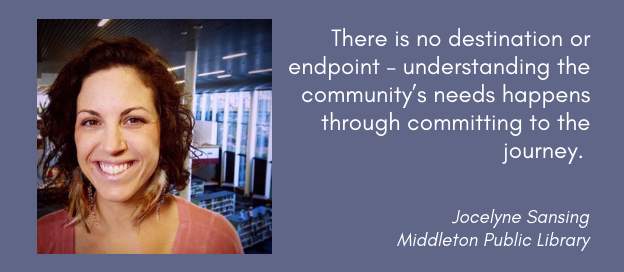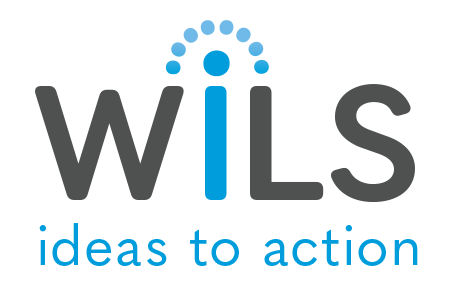
One of our greatest joys at WiLS is hearing our members tell the stories of the big and important work they are doing – interesting new projects or initiatives, or even interesting and new approaches to old projects. And, in addition to hearing about it, it makes us even happier when we can share those stories with other members. Each month, WiLS is proud to feature an interview with one of our library members.
This month, we interview Jocelyne Sansing, Director of Middleton Public Library!
Why did you, personally, choose to work in libraries?
After receiving my B.A. in English Literature and a certificate in Folklore from UW-Madison in 2003, I worked for the Center for the Study of Upper Midwestern Cultures (CSUMC). I loved assisting with the research and preservation of archival collections while producing educational and outreach programs for a broad public audience. My mentors encouraged me to apply to graduate school and for the first year, I took classes as a special student through the School of Library and Information Studies. I also worked various part-time jobs at campus libraries that included Special Collections, the Library Technology Group, and Digital Services. I am an extroverted people-person, and while spending hours alone in the archives on the eighth floor of Memorial Library was interesting, it quickly became clear that public libraries were my best fit! My job with CSUMC turned into a full two-year Project Assistant position that allowed me to be a full-time student. For twelve years I worked in rural, urban, county, and special district public libraries in Montana and Colorado before boomeranging back to Wisconsin. This is my first director’s position, but I did not attain my MLS to become a library director. I became a librarian because of my passion for public service and my belief that intellectual freedom and democracy has the power to transform lives.
What is unique about the culture of your library? How do you influence it?
The culture of the Middleton Public Library is one of overwhelming use, support, and love. The staff takes a proactive approach towards customer service by setting an example of tolerance and inclusiveness for each other, and the public. People from all walks of life are not just using the library, they are engaged!
As the director, I support the staff by giving them the creative freedom to explore their areas of expertise. I celebrate the small successes and congratulate a well-played failure. I lead by example and insist on keeping a regular public desk schedule, and I often attend outreach events. I influence the culture of the library as a big vision, responsible risk-taking, and disruptive thinker who is passionate about changing lives through access to quality information. As a former business owner, I take an entrepreneurial approach to redefining customer service, workplace culture, and user experience. I try to inspire those around me through enthusiasm, collaboration, and lots of fun.
What do you think is important to know about the community you work with? What helps you understand their needs?
Libraries are dynamic and ever-changing institutions that reflect and express their community’s values, needs, and culture. Since its inception in 1927 the Middleton Public Library has gone through seven major reinventions. It is important to know the community we work with is always changing and thus, the library is, too. Libraries > Books + Literacy > Reading. There is no destination or endpoint – understanding the community’s needs happens through committing to the journey.
What big ideas are being worked on at your library? What problems are being solved?
Middleton’s average monthly visitor count in 2018 was 31,100, and while most Dane County libraries are decreasing in the circulation of physical materials, Middleton continues to increase. To meet the demand for print materials, an average of 1500 new items were added to the collection in 2018. But, balancing of people space vs. collection space continues to be the library’s biggest challenge. To address short- and long-term planning solutions, the Library Board of Trustees contracted with the local architect and design firm, HGA. The project will focus on three main priorities in the short-term: 1. Increase square footage available to the public; 2. Create flexible spaces for new ways of gathering; 3. Improve the customer service experience.
Working inside the lines of an existing facility can be more challenging than a new building project. We are employing design thinking approaches when the path to a solution is unknown, so prototyping has become a big part of our mindset and ideation process. While most of the improvements we will make are aesthetic (a.k.a ‘de-beige-ing’) they will have a major impact on service delivery and the flexibility of the space.
These interviews are part of a series of interviews with both WiLS library and vendor partners. Your feedback is appreciated. If you have any to offer on this article or suggestions for upcoming interviews, contact Andrea Coffin at acoffin@wils.org.
